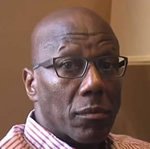
By BRUCE BARTLETT
Many well-meaning people mistakenly believe that the ultra-wealthy
are the source of American prosperity. They do the saving and
investment that creates jobs; they are the entrepreneurs who start new
businesses and implement economic innovations; and the well-being of
everyone in the working and middle classes is ultimately dependent on
the health and prosperity of the ultra-rich, it is widely thought.
This
belief is largely bipartisan, although obviously more widely shared
among repugicans. Since at least the Clinton administration, Democrats
have also worked to implement wealth-friendly policies, often called the
“neoliberal consensus,” such as free trade, low taxes on capital
income, low inflation and deficit reduction.
 The fact that repugicans want these things even more
should not obscure the fact that both parties generally share the same
economic philosophy, differing only in degree. Thus, despite high
unemployment, the federal government has done virtually nothing to
create jobs; despite the obvious failure of “austerity” programs
in Europe, both parties believe that deficit reduction is the principal
fiscal priority; and the obsession with minuscule levels of inflation
continues to constrain Federal Reserve policy.
There are, however,
a few creative thinkers out there saying that our national priorities
are all wrong and that the basic premise of where growth comes from is
upside down. One of these is Nick Hanauer, an entrepreneur from Seattle,
Washington, who argues that strengthening the middle class is the key
to wealth creation. And the key to middle class prosperity is
good-paying jobs.
In testimony before the Senate Banking Committee on June 6, Mr. Hanauer argued that consumption is what drives investment, not the other way around.
But
consumption is constrained by the continuing impoverishment of the
middle class due to wage stagnation and high unemployment, which has
reduced labor’s share of the income pie drastically over the last 13
years, as illustrated in the chart.
The fact that repugicans want these things even more
should not obscure the fact that both parties generally share the same
economic philosophy, differing only in degree. Thus, despite high
unemployment, the federal government has done virtually nothing to
create jobs; despite the obvious failure of “austerity” programs
in Europe, both parties believe that deficit reduction is the principal
fiscal priority; and the obsession with minuscule levels of inflation
continues to constrain Federal Reserve policy.
There are, however,
a few creative thinkers out there saying that our national priorities
are all wrong and that the basic premise of where growth comes from is
upside down. One of these is Nick Hanauer, an entrepreneur from Seattle,
Washington, who argues that strengthening the middle class is the key
to wealth creation. And the key to middle class prosperity is
good-paying jobs.
In testimony before the Senate Banking Committee on June 6, Mr. Hanauer argued that consumption is what drives investment, not the other way around.
But
consumption is constrained by the continuing impoverishment of the
middle class due to wage stagnation and high unemployment, which has
reduced labor’s share of the income pie drastically over the last 13
years, as illustrated in the chart.
Hanauer makes a simple and obvious point, but one with
profound implications for policy. If growth is essentially
demand-driven, the wealthy cannot be the drivers of growth because they
simply don’t consume enough and raise their spending very little in
response to increases in income. How could they? The number of rich
people is small and they can already afford whatever they want.
It’s not only the income of the middle class that is
ultimately essential for growth. It’s the wealth of that class, which
has been decimated by the fall in home prices and increasing
indebtedness, as middle class families struggle to maintain living
standards, put their children through college and cope with downward
income mobility.
A recent report from
the Federal Reserve Bank of St. Louis says
that the median household has only regained about half the wealth it
lost during the recession from recently-rising stock market and home
prices. (New data
just released yesterday shows further improvement in rebuilding wealth from the recession.)
It’s
easy to say that middle class families shouldn’t have locked so much of
their wealth into a single asset, housing, that is a highly fickle
investment, regularly rising spectacularly and then crashing just as
spectacularly. One can also fault the middle class for investing
insufficiently in stocks and continuing to stand by the sidelines as
stock prices have risen.
The real question is what can be done
now, given the straights that middle class families have fallen into.
Simply cutting taxes, the repugican one-size-fits-all solution to every
problem, isn’t viable as long as both parties insist that deficit
reduction is the first priority of fiscal policy. Also, there is zero
evidence that the
tax cuts of the shrub junta did anything to stimulate growth.
Progressives
believe that the decline of labor unions is a key. Unions now represent
just 6.6 percent of private sector workers, down from more than 20
percent in the 1970s. Unions used to be able to raise wages and improve
benefits in the continuing competition between capital and labor.
But
unions declined because of deep economic forces, such as globalization
and the shift from manufacturing to services. That will not be reversed
by making it easier for workers to organize. The proof is that unions
have declined just as much in countries with much stronger protection
for unions than the U.S. has.
Mr. Hanauer believes that the rich should pay more taxes. He believes that if all rich people had to pay more
it would have little if any economic effect because rich people are
motivated more by status and their relative positions in society
vis-à-vis other rich people than by the absolute level of their wealth
or income. If they all took the same tax hit, their relative position
would be unchanged and there would be no economic harm, Hanauer
believes.
But unless the higher revenues from taxing the wealthy
are somehow channeled into spending programs that benefit the middle
class, it is hard to see this move as more than a half step toward
middle class-driven, consumption-driven growth.
Mr. Hanauer favors
a big increase in the minimum wage to improve the income of the middle
class. He thinks the higher incomes of those who get higher wages will
raise spending and, ultimately, economic growth and profits for
businesses. But unless businesses can raise their prices to pay for a
higher minimum wage, I don’t see how this can possibly work. And unless
the Federal Reserve permits inflation to rise, it simply won’t happen. The result will be higher unemployment, not faster growth.
The
important thing, at this point, is to have at least a dialogue on
creative solutions to the nation’s core problem – the continuing
impoverishment of the middle class due to high unemployment, wage
stagnation, rising health costs, and the collapse of housing prices.
It
should be obvious by now that further governmental austerity measures
will only make matters worse, but there appears to be no support for an
expansionary fiscal policy, a federal jobs program, or a more
stimulative monetary policy. Sadly, this means there is no end in sight
to middle class malaise, which means that economic growth likely will be
stuck where it is for the foreseeable future.







 The fact that repugicans want these things even more
should not obscure the fact that both parties generally share the same
economic philosophy, differing only in degree. Thus, despite high
unemployment, the federal government has done virtually nothing to
create jobs; despite the obvious failure of “austerity” programs
in Europe, both parties believe that deficit reduction is the principal
fiscal priority; and the obsession with minuscule levels of inflation
continues to constrain Federal Reserve policy.
The fact that repugicans want these things even more
should not obscure the fact that both parties generally share the same
economic philosophy, differing only in degree. Thus, despite high
unemployment, the federal government has done virtually nothing to
create jobs; despite the obvious failure of “austerity” programs
in Europe, both parties believe that deficit reduction is the principal
fiscal priority; and the obsession with minuscule levels of inflation
continues to constrain Federal Reserve policy.

 The
city of Surprise, Arizona, has an unwelcome surprise for 64-year-old
retired firefighter Jessie Thornton: its police officers can tell
whether a person is drunk simply by looking in his eyes, breathalyzer
test be damned!
The
city of Surprise, Arizona, has an unwelcome surprise for 64-year-old
retired firefighter Jessie Thornton: its police officers can tell
whether a person is drunk simply by looking in his eyes, breathalyzer
test be damned!
 No, it's not a get-rich-quick scam. It's quite real.
No, it's not a get-rich-quick scam. It's quite real.



 To
make these cute snacks from Kouzino Mageieremata, core apples and slice
them thinly. Boil the apple slices to make them soft. Then place layers
of puff pastry in the bottoms of muffin cups and arrange the soft apple
slices on the pastry dough like rose petals. After you add sugar and
spices and bake them, you'll have an eye-catching and mouth-watering
treat.
To
make these cute snacks from Kouzino Mageieremata, core apples and slice
them thinly. Boil the apple slices to make them soft. Then place layers
of puff pastry in the bottoms of muffin cups and arrange the soft apple
slices on the pastry dough like rose petals. After you add sugar and
spices and bake them, you'll have an eye-catching and mouth-watering
treat.Chagnon committed the unforgivable sin, cardinal heresy in the eyes of a certain kind of social scientist: he took Darwin seriously. Along with a few friends and colleagues, Chagnon studied the up-to-date literature on natural selection theory, and with brilliant success he applied the ideas of Fisher, Hamilton, Trivers and other heirs of Darwin to a human tribe which probably ran as close to the cutting edge of natural selection as any in the world. It is sobering to reflect on how unconventional a step this was: science bursting into the quasi-literary world of the anthropology in which the young Chagnon was trained. Still today, in many American departments of social science, for a young researcher to announce a serious interest in Darwin's dangerous idea--even an inclination towards scientific thinking at all--can come close to career suicide.







